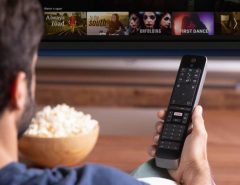Social TV is the latest evolution of interactive TV. It was in its early stages of transforming the TV industry but unfortunately, it never took off. But that doesn’t mean it doesn’t exist. Let’s delve into this technology and explore its impact in the present century.
Table of Contents
What is Social TV?
Social television is all about real-time communication. Shows on IPTV or television encourage interacting with the audience hence, it combines TV and social networking.
The idea behind this technology is to make TV interactive. It enables the audience to actively engage in live TV. People can talk back and interact with their TV sets just like they do with their PCs and laptops.
While this level of interaction isn’t being practiced so for, any interaction on social media about a TV program is also considered Social TV. Marketers have been using this to their advantage and learn about the interests of the audiences.
How Social Media and TV are Working Together?
Reality Shows
The basic meaning of social TV is to gather people around TV equipment and watch their favorite shows. Reality shows have played a huge part in that. Shows such as The Voice and The X Factor connected with the audience via Twitter.
The X Factor encourages users to tweet their votes while watching the show live. Similarly, The Voice focuses on receiving real-time social responses via tweets and on-air hashtags. Once specific tweets related to the episode are posted, viewers discuss those tweets and the show gets exposure.
Mobile Apps
To let the audience use social media while watching their favorite shows, TV networks have launched mobile apps. A great example is set by the Miso Social TV app for Android users. It integrates with Direct2TV letting users see what is currently playing. They can easily share their experiences on social networks.
TV Ads
Social networks have been integrating TV content into their platforms directly for a while now. Facebook Watch is on top of the game. It pairs premium content with video sharing functionality. Creators can upload videos, post original content, and news.
How Are Brands Using Social TV?
Brands are using social TV to encourage audience participation, too. They are engaging with their audience in compelling ways. This is how they are doing it:
NASA
They took their content strategy to IGTV. NASA created 1 to 5 minutes of informative videos on topics such as3D printing service and the surface tension in space, etc.
This proved that UGC content performs well on social TV when catered to the target audience well. Interested individuals are learning unique content without any hidden cost.
World Series
MLB created World Series for broadcasting creative ads. This reduced the line between live broadcasting and advertising.
The series was aired on YouTube TV. In 2017, during the 2-minute commercial, they launched “game morphs”, live commentary for holding discussions. The camera zoomed out from the field to a TV set in a viewer’s living room featuring the same live footage on their TV. That was pretty cool.
YouTube TV’s smart video marketing strategy can be replicated to keep the audience from switching the channel during commercials.
Netflix
Netflix started its IGTV channel with an hour-long video. Remember when they showed the video of Cole Sprouse eating a hamburger? It was a brilliant marketing strategy. Viewers love Netflix for its critically acclaimed content and compelling storylines. While it’s easy to find Netflix alternatives, but there’s no match for the content catalog featured on their site.
The streaming service provider has taken plenty of unique approaches to promote its IGTV channel. Their strategy has been appealing to the millennials particularly. New video promotions, BTS interviews, and a lot more are found there. They have been very successful in generating traffic through it.
Snapchat
Snapchat also experimented with Social TV. It created Discover Channels allowing big networks like Comedy Central, CNN, Vice, National Geographic to show clips of their shows. Like all other Snapchat clips, these expire in 24 hours too. It’s a remarkable way to encourage viewers to log in to their app and check what’s new on TV.
This can open all sorts of horizons. Most of all, it would encourage potential customers to look for cable TV deals and tune into the new shows on the said channels.
What’s The Future of Social TV?
Social TV has huge potential. Many in the entertainment industry have already started focusing on user-generated content. Using automation tools, offering a personalized TV viewing experience will become easier than ever.
All the content created through interaction can be put into the database for analysis. Imagine what marketers and advertisers could do with all this information? They would be able to select exactly the customer they wish to target and with what.
This also means brands will pay closer attention to the demands and interests of the audience. At the same time, they will produce authentic content relevant to their brand values.




